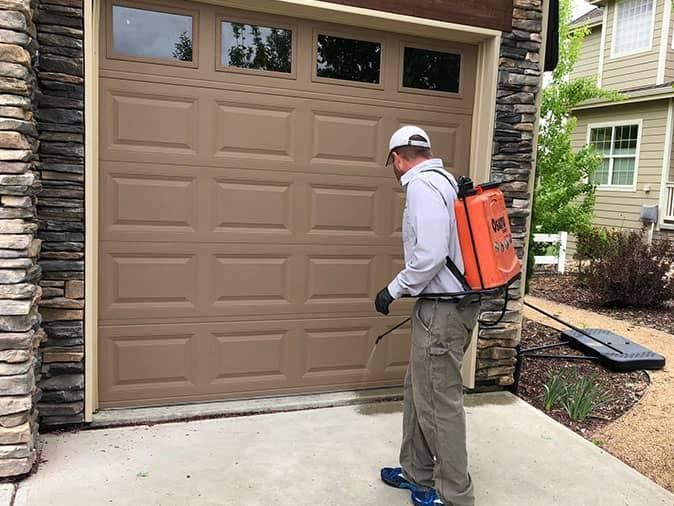Colorado is home to cockroaches that occasionally invade our homes and businesses. From the small and speedy German cockroach to the larger, more imposing American cockroach, each type has its own unique traits and habits. Whether you're curious about these resilient insects or are dealing with an unexpected infestation, understanding Colorado's different types of cockroaches can be helpful.
Three common Colorado cockroaches
Before we discuss the three most common types of roaches in Colorado, let’s identify the physical traits they share. First, all have long antennae, six legs with spines, two small appendages at the end of the abdomen (called cerci), and three body parts. Some cockroaches have wings, while others don't.

American Cockroaches
American cockroaches are reddish-brown in color and have a distinctive yellowish figure-eight pattern on the backs of their heads. They also have well-developed wings.
The largest house-infesting roach in Colorado, these pests can fly short distances but prefer to run. They are particularly attracted to warm, moisture-prone areas like basements, laundry rooms, and kitchens.

German Cockroaches
German cockroaches are small, light brown or tan-colored insects with two black lines on their backs between the head and wings. Their wings extend past their abdomens.
These cockroaches are known for their fast movements and can be seen scurrying quickly when disturbed. They’ve also earned a reputation for being the worst house-infesting cockroaches because they can cause health problems and are hard to eliminate.

Oriental Cockroaches
Oriental cockroaches have shiny dark, almost black bodies. Adult males have wings that cover about three-quarters of their abdomens, while females have shorter, undeveloped wings.
These medium-sized roaches are less agile and slower-moving than American and German cockroaches. They tend to frequent damp, cool areas like crawl spaces and drains, which can make them hard to eliminate.
Now that you have learned about each of the common cockroaches in our area let's discuss what it means to find one in your home.
Does one cockroach mean you’re infested?
No. Finding a single cockroach in your home does not mean you're infested, but it is certainly should raise a red flag. It means roaches can get inside. Here are a few cockroach facts to keep in mind:
- It is possible for one cockroach to find its way in, but if you don't eliminate it, more are likely to show up.
- If you see a cockroach with something protruding from the end of its abdomen, and you get rid of that roach, you may prevent an infestation. That is an ootheca (an egg casing) and there are many eggs inside, waiting to hatch.
- Most cockroaches stay in hiding. It is rare to see one out in the open.
When you see a cockroach in your home, we recommend contacting a pest control company for an inspection. While you may not have a full-blown infestation, a proactive response could save you a lot of headaches.
How to exterminate cockroaches
Eliminating cockroaches isn’t as simple as you might think. You can try to starve them out but since they eat strange things like hair, dead skin, and wallpaper paste, as well as a more normal fair of human food, you won’t have much success. It can also be difficult to eliminate every potential water or moisture source.
Looking to get rid of cockroaches in your home? Contact EnviroPest today! Our pest control specialists offer home pest control services in Colorado Springs, Denver, Boulder, and Fort Collins, as well as other areas in NoCo. We’ll address existing roach activity and prevent new infestations from developing. Check out our Colorado’s Choice Smart Service below to learn how we can help protect your home and family from these germ-spreading pests.

Colorado's Choice Smart Service
Our Colorado's Choice Smart Service is the most comprehensive home pest control plan EnviroPest targets 30+ pests and includes four seasonal visits and 24/7 digital rodent monitoring.
Pests covered under the Colorado's Choice Smart Service includes:
- Ants (Carpenter ants, odorous house ants, pavement ants, sugar ants)
- Beetles
- Centipedes
- Earwigs
- Mice
- Rats
- Spiders (House spiders, rock spiders, wolf spiders, black widow spiders)
- Wasps (Baldfaced hornets, paper wasps, yellow jackets)

Testimonials
GETTING STARTED IS AS EASY AS 1-2-3
REQUEST QUOTE & SCHEDULE



